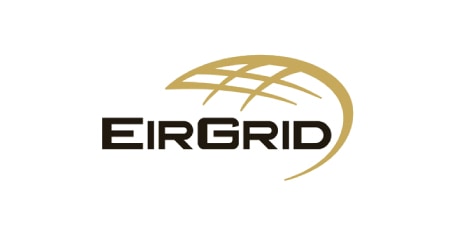
Overview
EirGrid Group is a state-owned company whose primary task is the safe, secure and reliable delivery of electricity. The group includes EirGrid and SONI, the electricity system operators for Ireland and Northern Ireland as well as the Single Electricity Market Operator (SEMO) that runs the wholesale market for electricity. The transition to low carbon and renewable energy is driving a significant transformation in the electricity system of Ireland in parallel with what is observed in other parts of the world. The expectation in Ireland and Northern Ireland is that by 2030 there will be need for 8400MW and 1600MW of renewable energy where most of it is expected to come from wind. There will also be a need to have an increased level of interconnection to Great Britain and continental Europe. The expectation is that this will need to double from the existing 7% of total capacity. In Northern Ireland, SONI is working to design a green energy system that can accommodate 95% renewable energy at any one time. The combined outcome is aiming to put Ireland on course with its 70% renewable energy target by 2030.
Planning and operating a system with an increased level of renewable energy that is integrated into the grid with inverter-based technologies has its own technical challenges and difficulties. Key challenges include stability of frequency and voltage, lack of inertia, managing a system with depleted fault levels and intermittent energy supply from renewable sources. Planning and operating the system with these challenges require the use of advanced power system modeling techniques to foresee and predict possible issues and identify appropriate mitigation measures. Dynamic system modeling provides one such advanced modeling platform where fundamental frequency behavior can be represented and estimated to a certain level of accuracy.
Challenge
The proliferation of renewable energy integrated into the wider power networks via power electronic devices creates a more complex modeling environment. The traditional synchronous generation behavior was relatively easier to estimate. This is no longer the case and more complex models able to replicate the behavior of the power electronic devices are required. Different wind turbine generators based on a combination of technologies behave differently in response to system events such as faults. These need to be captured in a dynamic model environment to predict complete system behavior.
As part of the transition to renewable resources, EirGrid has already implemented analytical processes that run dynamic simulations in real-time operational environments that utilize the most recent modeling recommendations for power electronic-based plants. These are based on the DSATools™ (and the security assessment modules VSAT/ TSAT/WSAT). Therefore, there is a need to replicate this approach for network planning environments where the effect of connection of such technologies can be tested well in advance with mitigation identified for possible eventualities.
Solution
PSC provided expert support in reviewing and updating the existing PowerFactory dynamic model that includes the All-Island power system covering both EirGrid and SONI transmission areas. In particular, PSC provided the following services:
- Investigate and resolve initialization issues associated with the All-Island model such that it can run a dynamic simulation
- Update the East-West Interconnector (EWIC) HVDC model based on generic VSC-HVDC controllers and test the model’s behavior against TSAT simulation and field measurement
- Update the Moyle HVDC based on generic LCC-HVDC controllers, add a user-defined model for HVDC power runback function and test the model’s behavior against TSAT simulation and field measurement
- Update wind turbine generator models based on the latest Western Electricity Coordinating Council (WECC) generic models (all type-1, type-2, type-3 and type-4 wind turbine generator models were implemented)
- Test model’s behavior of all implemented WECC generic controllers for all the wind turbine generator units within the All-Island network against loss of generation and system fault events under a winter peak high wind generation scenario
- Develop and implement models (for a few locations) for new network devices such as Battery Energy Storage System (BESS) using WECC BESS control system model
- Benchmark simulation results between PowerFactory and TSAT on loss-of-generation and three-phase fault events
- Create a process document to describe the procedure for updating wind turbine generator models based on the templates of WECC models
- Provide training on the process of model updating and usage
PSC Advantage
PSC’s globally recognized power system modeling experts provided an objective approach in the selection and implementation of dynamic models utilizing the most recent model developments from around the world.
Wider modeling experience in all aspects of power system modeling brought by PSC’s experts provided a unique way to capture any further implications in updating the models. Experience from other jurisdictions brought in by PSC engineers has also provided a solid base for benchmarking and testing where expected model behavior played a crucial role in identifying possible errors. PSC’s experienced engineers provided a deep and necessary understanding of the Irish electrical power system and model requirements for the overall model functionality.
PSC provided weekly updates in all aspects of the model update and development with online meetings at crucial decision stages. PSC engineers provided online training sessions in stages to a wide base of EirGrid engineers explaining the full functionality of the model and how further updates can be implemented in-house by EirGrid engineers.

